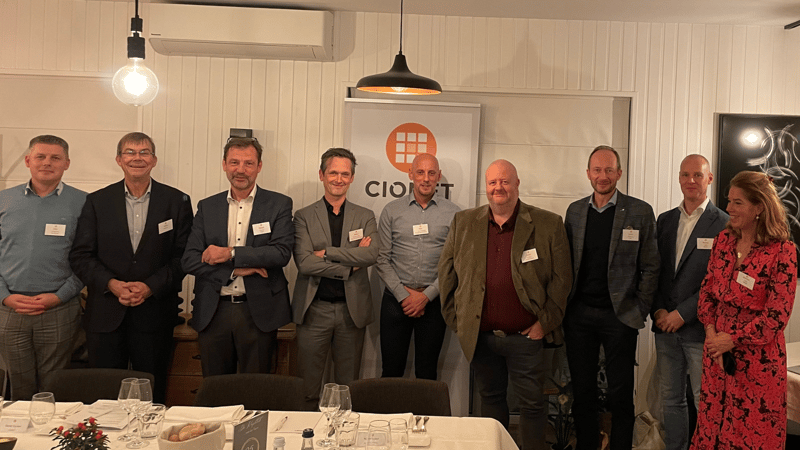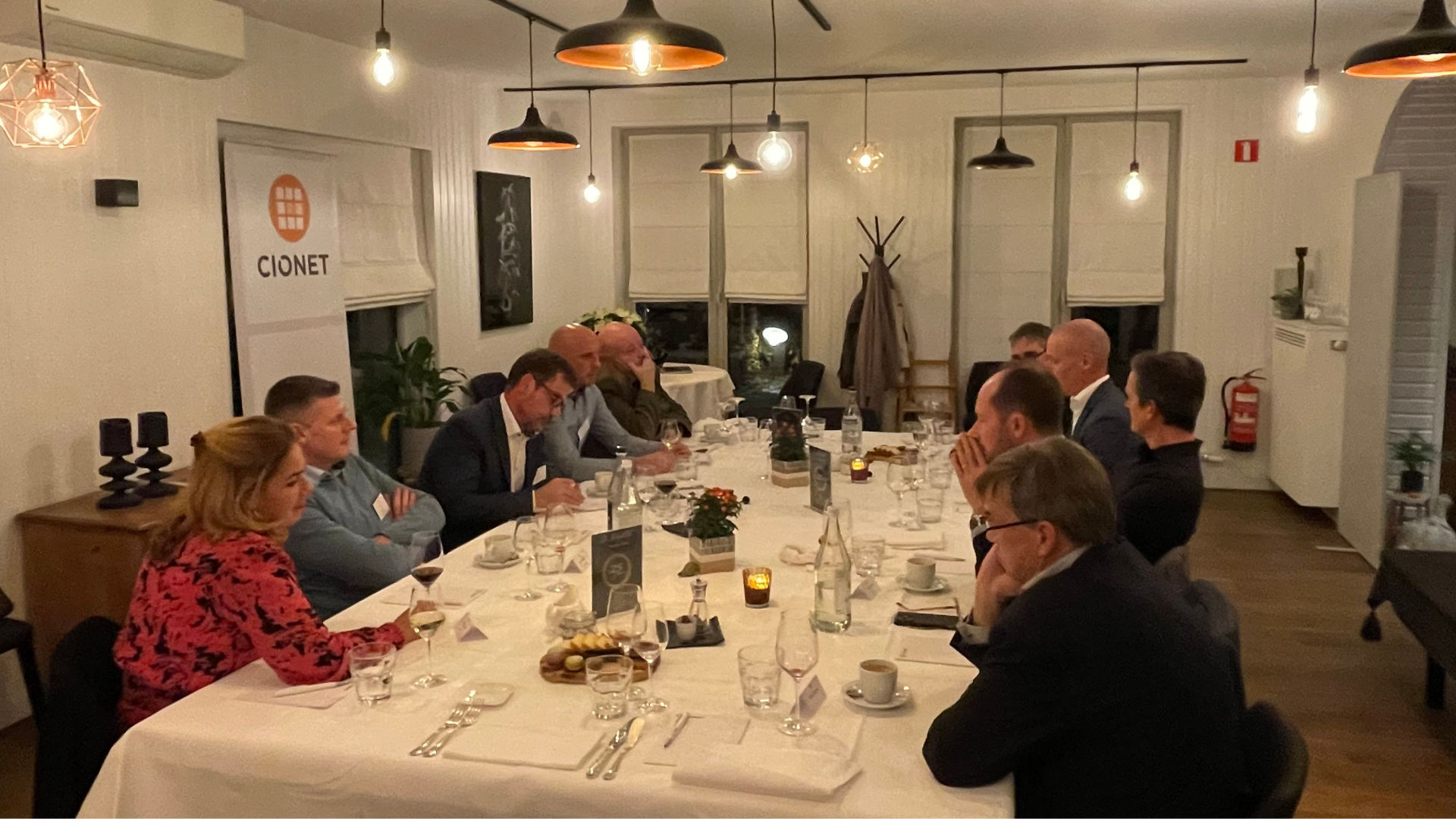
Is low-code technology a box of Lego blocks for business users? This question arises as business users, frustrated by the responses from development teams, start building their own applications. But this trend prompts vital concerns: what level of ‘technical debt’ and security risks does it introduce? Who will maintain these non-IT-built applications? Is low-code inadvertently fuelling the growth of shadow IT and adding to security vulnerabilities, or is it a strategic solution to manage it? How can organisations effectively make the business case for low-code? When is it appropriate to use, and when should it be avoided? These crucial issues were candidly raised at a roundtable organised by CIONET in partnership with MENDIX, on Thursday, November 23, at De Kapblok restaurant in Asse.
Leading the conversation were key figures: Stijn Hoegaerts, IT Director at Van Marcke, a Kortrijk-based wholesaler specialising in bathrooms, wellness, heating, and water solutions; Dieter Van de Velde, Director of Global IT; and Stijn Van Uytfanghe, Global Digital Transformation Manager at Premium Sound Solutions, an expert in automotive audio systems, previously known as Philips Speaker Systems.
Van Marcke's Digital Transformation with Low-Code
Six years ago, Stijn Hoegaerts embarked on a mission at Van Marcke. His objectives were crystal clear: restructure IT, deploy an ERP system, and steer the company through its digital transformation. The competition was fierce, with direct sales by manufacturers on platforms like Bol.com and Amazon. Van Marcke, rather than engaging in price battles, chose a different path. They decided to enrich their customers and in-store collaborators with higher-value services, leveraging their rich technical expertise and product knowledge.
The plan? Equip them with tailor-made applications like wizards and configurators to navigate through the maze of components and technologies. But the challenge was real: such specialised tools weren’t readily available in the market. The development team, diverse in their technological expertise, faced hurdles in unifying their efforts for this project. Stijn's quest led him to Mendix, a low-code platform to unify his IT developers. He crafted a compelling business case for the platform, aiming to develop over 20 bespoke applications.
Yet, as often happens, reality took a different turn. The advent of the COVID-19 pandemic shifted Van Marcke’s focus to its core operations. The ambitious list of applications took a backseat as the company honed in on implementing its SAP ERP environment. Here, the low-code platform Mendix proved to be a silver lining, adeptly handling SAP change requests, keeping the core system clean, and facilitating the creation of add-ons in low-code.
Interestingly, despite initial scepticism, the SAP specialists at Van Marcke adapted remarkably well to the Mendix platform, which was designed for seamless SAP integrations. However, some developers found it challenging to step out of their comfort zones of legacy technologies. Amidst the pandemic, the team, under Stijn’s guidance, didn’t wait for external solutions and developed "Stay-safe," their own COVID-19 tracking app, in just one week.
Today, Van Marcke’s IT team is proficient with Mendix, fostering a dynamic and collaborative workflow. They continue to expand SAP functionalities and take on various projects, including creating temporary, purpose-built applications. Looking ahead, Stijn is exploring the possibility of developing a customer portal using low-code.
Addressing the roundtable’s provocative questions, Stijn emphasised the need for a solid business case for low-code. He advocated for developing a substantial suite of applications, not just one-offs, focusing on reusability to save time and resources. He clarified that low-code at Van Marcke is not a laissez-faire tool; IT remains firmly in control, with business teams actively participating in design and deployment, under the vigilant eye of the IT architect who ensures seamless integration and governance compliance.

PSS’s IT Evolution with Dieter and Stijn
Dieter Van de velde, sharing PSS's story, outlined their new IT strategy launched in 2016. It rested on three pillars: standardise where feasible, acquire the best-in-class solutions, and concentrate ruthlessly on unique strengths. Between 2016 and 2020, PSS implemented SAP ERP across all its sites globally. However, the uniqueness of their production processes, especially in maintenance, demanded more than what standard SAP could offer. An alternative solution was found in a template- based maintenance application on the Mendix platform. Eventually, PSS’ operations team crafted multiple applications on Mendix tailored to their specific needs.
Stijn Van Uytfanghe, responsible for PSS’s digital transformation, underscored the significance of low-code in their journey. He viewed low-code as a natural evolution in programming, allowing developers to focus more on business logic and speeding up development and reuse.
PSS adopts a pragmatic approach to development requests. An operational excellence board collects and evaluates proposals from the operations team, involving business teams in decision-making. They assess the feasibility and potential return on investment for each project, and together with IT they decide whether to proceed with SAP, a best-in-class application or low-code development. Central IT at PSS provides the necessary technological framework, governance, and mobile interfacing.
Stijn acknowledged the ongoing challenges and opportunities in optimising operations at PSS. Shadow IT remains a concern, with engineers creating essential applications that lack long-term support. He sees vast potential for further digitalisation in production, especially with AI, which could revolutionise data collection and analysis for production optimisation.
In response to the query of Menno Odijk, Field CTO at Mendix, the participants discussed AI’s potential applications during low-code development, like enhancing testing processes, assisting developers with integration points, and automating the creation of diagrams and models based on functional analysis input.
And coming back to the question on security, Menno reassured that while Mendix ensures the security of their supported building blocks, community-built blocks are a shared responsibility. Mendix can also perform security audits on request to evaluate a customer’s low-code development.

In conclusion
The testimonials of Van Marcke and PSS clearly showed that technology is just one piece of the puzzle. The real magic happens when teams and processes are aligned with the technology. It's all about creating a culture of collaboration, where IT and business seamlessly interact, and continuously adapt processes for efficiency. The success of low-code lies not just in the code but in the people who bring it to life and the processes they enhance.
CIONET extends its gratitude to Mendix, Menno & Mariken, and to the speakers Stijn Hoegaerts, Stijn Van Uytfanghe & Dieter Van de Velde, and finally to all participants for this fruitful and enlightening exchange of experiences and views.
--
These Stories on CIONET Belgium
No Comments Yet
Let us know what you think